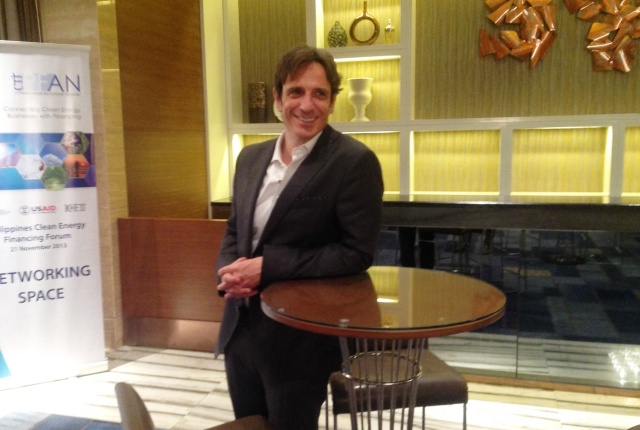
Brilliance and charisma are most likely the first two words that will cross your mind when you meet ITPI’s Italian architect and CEO, Romolo V. Nati. Brimming with a perfectly blended concoction of striking intelligence and affable personality, it is no wonder why Kagay-anons have nothing but good words to say.
Having been given a chance to pick his brains during a recent interview proved to be very fascinating and thought-provoking. Spanning different topics such as beauty, inspirations, sustainability, nature, and and simple solutions, he talks about ideas that are inspiring, sublime and even bordering on poetic.
Here are seven ideas that I learned from Arch. Nati.
1. GREEN VERSUS SUSTAINABLE
For laymen like you and me, it is quite easy to interchange these two words. But green and sustainable are not one and the same. Though both are highly desirable practices for the environment, Arch. Nati prefers “sustainable” even more than green.
Why? Sustainability means reducing the impact on the environment through responsibly-sourced and completely renewable materials and resources. This means that from the sourcing of the materials to its long-term maintenance, the structure does not in any way harm its environment and surrounding areas, nor does it pollute the air or deplete the resources. A product may therefore be green, but not sustainable. The key is to find a design that incorporates the two.
2. BEAUTY IS WHAT WORKS
Beauty affects people, says Arch. Nati. If your design solves the problem but the result does not look beautiful, then it was not properly done. If something works perfectly and is done right, it will come out beautifully. He cites nature as an example. Nature does not think in terms of beauty; it concerns itself only of functioning properly, but it ends up being elegant and beautiful because it works.
3. ITALY AND THE PHILIPPINES
Our Italian amico is so at home in the Philippines. The question, he says, is not what the similarities are between the Philippines and his native Italy. There are too many striking similarities that it’s difficult to mention one by one. For several Italians, coming to the Philippines feels just like coming home. Aside from notable cultural similarities, religion, sense of humor, fondness for food, and that distinct zest for life, Italians and Filipinos share simply too many common traits.
4. THE SOLUTION IS OFTEN THE SIMPLE ONE
People are so busy looking for the complicated answers to problems that the simple solutions are being overlooked. In design, simple solutions cost less to build and less to maintain, resulting to a reduced costs and higher profitability for everyone involved.
5. NATURE HAS THE ANSWER
Nature provides us with patterns and processes that when examined, can be used as a basis for sustainable design. This is not something that has recently been invented; it is something that has been around for ages, but has been shoved aside. ITPI’s projects are patterned after the brilliant designs found abundantly in nature. These include coral structures, bee hives, and the termite mound which is the basis for Primavera Residences’ ventilation system.
6. INSPIRATION IS EVERYWHERE
Inspiration follows me everywhere, he says. He takes inspiration from everything and anything – nature, history, works of great architects, the Bauhaus designs and influences, people, and so many countless sources. There is simply no shortage of inspiration for this man when it comes to architecture and design.
7. HIS VISION FOR CAGAYAN DE ORO
After visiting different cities and provinces in the country, ITPI chose Cagayan de Oro for what they call their newest baby, the Primavera Residences. I couldn’t resist but ask him why Cagayan de Oro. To which he responded with, why not?
Cagayan de Oro has become a dynamic microcosm of urban living meets laidback rural lifestyle, and it promises even more growth in the years to come. He wishes to see Cagayan de Oro becoming a hub for technology, social media, lifestyle, and culture, and sees this happening in the near future should younger Kagay-anons work together to pursue this vision.
Now that’s something definitely worth pursuing, don’t you think?
Want to know more about Architect Romolo V. Nati’s projects and ideas? Click HERE.

